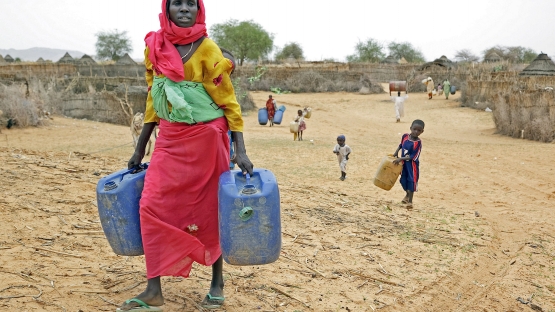The beneficial use of nuclear science and technology in food and agriculture, water and soil management, healthcare, nutrition, sustainable industry and many other fields testifies to its scope and utility: isotopic techniques reveal new facts about our astonishing, yet fragile planet; nuclear medicine detects cancer and radiotherapy treats it; deuterium isotopes help gauge the growth of children; and ionizing radiation eradicates disease-carrying pests. The connection between science and the wellbeing of society is the focus of World Science Day for Peace and Development, which is celebrated annually on 10 November to demonstrate the importance and relevance of scientific research in daily life.
The theme of this year’s World Science Day is ‘Science for a Sustainable Future’, a topic that offers an opportunity to examine the critical role that science will play in reaching the goals laid out in the 2030 Agenda for Sustainable Development.
The seventeen Sustainable Development Goals (SDGs), unanimously adopted by the 193 UN Members in September this year, covers a comprehensive range of topics. Their achievement will rest on many contributions, in particular that of science and technology. The IAEA, through its technical cooperation (TC) programme, works with Member States to enhance understanding of the peaceful uses of nuclear science and technology; to identify ways that the challenges and needs of populations around the world – especially in developing countries – could be effectively addressed with nuclear science and technology; and to support the deployment of scientific and technical capacities to the benefit of all, from small-scale farmers and livestock herders to nuclear operators and regulators.
The 17th and final goal adopted by the UN General Assembly on 25 September calls for the “strengthening of the means of implementation” – bringing together major cross-cutting issues that support sustainable development, such as finance, science and technology, data, and partnership building. IAEA’s contribution towards achieving this goal will largely be made possible through several approaches:
Firstly, efforts must be made to forge productive partnerships with a range of different partners, from UN agencies, national ministries, to specialized institutes and networks. Such partnerships recognise the interconnected nature of many of the development goals and the need for multifaceted and coordinated cross-sectoral responses. Equally important is the need to promote and facilitate the transfer, dissemination and diffusion of proven technologies for addressing developmental challenges, which the IAEA accomplishes through the continuing work of its TC programme. Through the TC programme, training events, expert missions and workshops are regularly launched in order to familiarize national counterparts with new nuclear techniques and applications. Moreover, IAEA Fellowships are awarded in order to train university graduates, making a direct contribution to the human resources and national capacity in a range of technical and scientific areas.
But transferring technology alone is not sufficient to achieve the ambitious goals agreed this September. To ensure the long term sustainability of TC projects, the IAEA works hard to strengthen regional capacities according to the developmental priorities of its Member States. Through the TC programme, IAEA Member States address regional development challenges using nuclear science and technology, share expertise and experience, and learn from one another.
The key role of science, technology and innovation in the new sustainable development agenda is undisputed. IAEA technical cooperation activities are able to make important tangible contributions to the achievement of the global goals, and the TC programme is well positioned to support Member States in achieving their new national SDG targets. The IAEA also has a unique role to play in supporting Member States in using science, evidence and data for decision-making and policy – Science for a Sustainable Future indeed!


